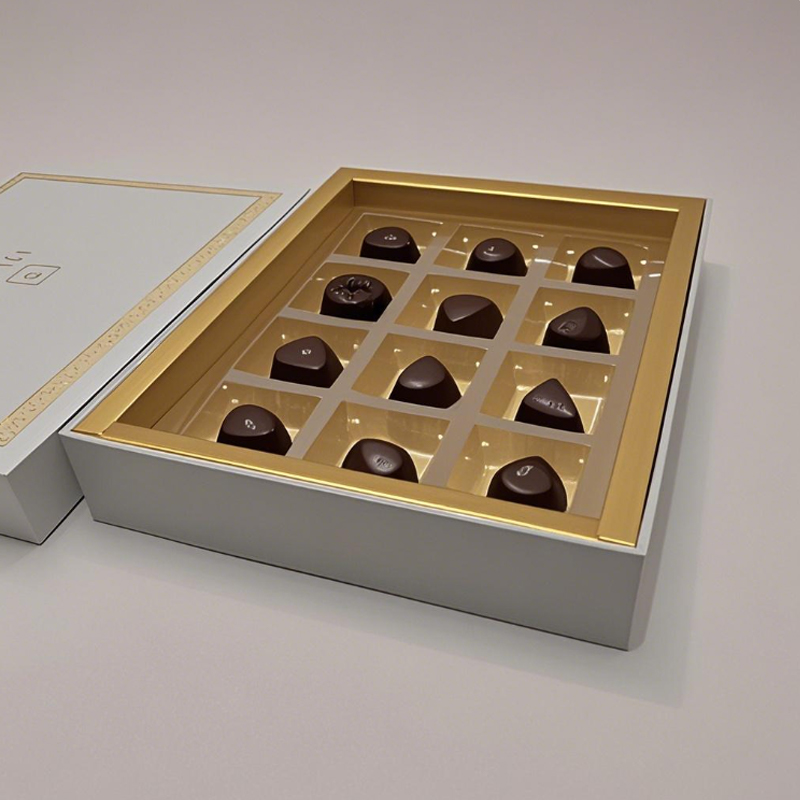Chocolate isn’t just a treat; it’s an experience. From the moment a consumer lays eyes on a beautifully packaged chocolate box, their anticipation begins. For brands, custom chocolate packaging isn’t merely about protecting the product—it’s about creating an emotional connection, conveying quality, and differentiating from competitors. But what exactly should businesses consider when customizing chocolate packaging paper boxes? Let’s explore the essential factors that combine functionality, aesthetics, and consumer appeal.
1. Eye-Catching Design and Artwork
The first impression matters. Chocolate packaging must stand out on shelves or online stores, capturing attention instantly. The design should reflect the brand’s personality—luxurious, playful, artisanal, or modern. Elements to consider include:
Patterns and motifs: Gold foil accents, abstract art, or cocoa-themed illustrations can enhance the perceived value.
Typography: Fonts must be legible yet stylish, reflecting the brand’s identity.
Target audience alignment: Packaging for premium chocolates might use minimalist luxury cues, whereas seasonal or gift chocolates could feature vibrant, playful designs.
A thoughtful design transforms a simple chocolate box into a memorable experience.
2. Color Palette and Visual Appeal
Color isn’t just decorative; it communicates mood, flavor, and quality. Chocolates with rich, dark cocoa might pair with deep browns and golds to suggest luxury, while fruit-filled chocolates could use brighter colors to highlight freshness and fun.
Considerations include:
Using contrasting colors to make logos or brand names pop.
Ensuring colors align with brand identity and seasonal campaigns.
Balancing aesthetics with practicality—light colors may show dirt or fingerprints easily.
3. Material Selection and Food Safety
Chocolate packaging must safeguard the product. This begins with selecting the right paper or cardboard material. Quality and safety are paramount:
Food-grade materials: Ensure that inks and adhesives are non-toxic and FDA-approved if intended for edible contact.
Strength and thickness: Sturdy cardboard prevents crushing during transport.
Eco-friendly options: Recyclable or biodegradable materials resonate with environmentally conscious consumers.
Material choice directly impacts both consumer safety and brand reputation.

4. Size, Shape, and Portion Considerations
Customizing the dimensions and shape of the chocolate box ensures practicality and enhances presentation. A few considerations:
Fit: Boxes should snugly hold the chocolates to prevent movement, minimizing breakage.
Portioning: Compartments or inserts can separate individual chocolates, maintaining appearance and preventing flavor mixing.
Gift suitability: Consider if the box should be stackable, easy to wrap, or suitable for shipping.
Creative shapes—heart-shaped boxes for Valentine’s, or elegant rectangular boxes for luxury collections—can elevate consumer perception.
5. Printing Techniques and Finishing
The printing and finishing methods contribute significantly to perceived quality:
Foil stamping or embossing: Adds a premium touch to logos or text.
Spot UV or matte finishes: Create tactile contrasts and sophistication.
Digital printing: Cost-effective for limited editions or seasonal packaging.
High-quality printing ensures the artwork stands out and withstands handling without smudging or fading.
6. Box Structure and Functionality
Functionality matters as much as aesthetics. A well-designed box should be:
Easy to open yet secure: Magnetic closures, ribbon pulls, or tuck-in flaps balance usability and protection.
Stackable and durable: Supports storage, transport, and retail display.
Reusable: Some consumers appreciate boxes they can repurpose, increasing brand recall.
Structural design also influences customer satisfaction during unboxing, enhancing the overall chocolate experience.
7. Cost Management
Customization is an investment, but it must align with budget realities. Consider:
Material costs vs. perceived value: Premium finishes may increase production costs but can justify higher retail pricing.
Production efficiency: Simple structural designs reduce labor and waste.
Batch size: Small runs can be costlier per unit; plan for scalable orders if successful.
Balancing quality and cost ensures that the packaging elevates the product without cutting into profitability.
8. Branding and Messaging
Finally, chocolate packaging is a platform for storytelling. Beyond aesthetics and protection, it communicates the brand’s ethos:
Highlighting ingredients, origin, or sustainability can appeal to conscious consumers.
Seasonal messages or limited-edition themes can create urgency.
Thoughtful copywriting—short, engaging descriptions or taglines—reinforces brand identity.
When done correctly, branding on chocolate packaging can turn a single purchase into long-term customer loyalty.
Conclusion
Customizing chocolate packaging paper boxes is both an art and a science. Every decision—from design, color, and materials, to structure, printing, and messaging—affects how consumers perceive the product and the brand. Brands that thoughtfully integrate these factors can create packaging that is functional, visually appealing, sustainable, and memorable, transforming chocolate into an experience that delights from the first glance to the last bite.
